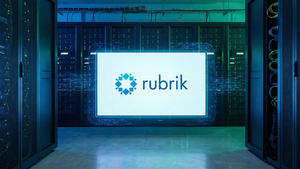
The second quarter of 2025 corporate earnings season has largely concluded, painting a picture of robust corporate profitability, significantly propelled by the burgeoning Artificial Intelligence (AI) sector and the enduring strength of megacap technology companies. This period has seen the S&P 500 index achieve new all-time highs, driven by a wave of optimism and upward revisions in future earnings forecasts. However, as the focus shifts to upcoming reports from major retailers, the market eagerly awaits crucial insights into the health of the American consumer and the nuanced impact of ongoing economic pressures, including tariffs.
AI and Megacap Tech Drive Market Optimism
The Q2 2025 earnings season was characterized by stronger-than-expected results, particularly from companies at the forefront of AI innovation and the established megacap technology giants. The S&P 500 demonstrated an impressive aggregate year-over-year earnings growth rate of 11.8% to 12.0%, significantly surpassing initial conservative projections. This marks the third consecutive quarter of double-digit earnings expansion for the index, with approximately 80% to 82% of S&P 500 companies reporting actual Earnings Per Share (EPS) above estimates. Revenue growth also mirrored this strength, extending the S&P 500's revenue expansion streak to 19 consecutive quarters.
The Information Technology and Communication Services sectors were the primary drivers of this growth, both pacing at over 20% year-over-year growth in Q2 2025. The "Magnificent Seven" – a group comprising Apple (NASDAQ: AAPL), Microsoft (NASDAQ: MSFT), Amazon (NASDAQ: AMZN), Alphabet (NASDAQ: GOOGL), Meta Platforms (NASDAQ: META), Nvidia (NASDAQ: NVDA), and Tesla (NASDAQ: TSLA) – remained the cornerstone of U.S. equity outperformance. This elite group collectively grew EPS by 26% year-over-year in Q2, beating consensus by 12 percentage points, and their collective gain for the quarter outpaced the other 493 stocks in the S&P 500 by over 14%.
Specific highlights include Microsoft (NASDAQ: MSFT) reporting revenue growth exceeding 20% year-over-year, with its Intelligent Cloud segment growing 39% and its AI business reaching a $15 billion annual run rate. Amazon (NASDAQ: AMZN) saw its Web Services (AWS) revenue increase by 17.5%, while Alphabet (NASDAQ: GOOGL) benefited from AI-fueled growth in its search and cloud segments, leading to increased AI spending plans. Nvidia (NASDAQ: NVDA), a leader in semiconductors, saw its stock surge 81% from April to July 2025, driven by booming demand for its AI accelerators. Beyond these giants, companies like SoundHound AI (NASDAQ: SOUN) reported a 217% year-over-year revenue jump, and Palantir Technologies (NYSE: PLTR) topped $1 billion in quarterly revenue for the first time, buoyed by soaring demand for its AI platforms.
Winners and Losers in a Shifting Landscape
The Q2 earnings season clearly delineated the winners and those facing headwinds. The undeniable winners are the companies deeply entrenched in the AI ecosystem and the established megacap technology firms. Their robust performance is a testament to the accelerating adoption and investment in Artificial Intelligence, driving significant capital expenditure in AI infrastructure and data center development. Companies like Microsoft, Amazon, Alphabet, and Meta Platforms are pouring billions into AI, fueling growth not only for themselves but also for ancillary industries like energy and utilities due due to increased power demand. The demand for AI accelerators and chips has significantly boosted companies like Nvidia and AMD (NASDAQ: AMD), with AMD reporting record Q2 revenue of $7.7 billion, driven by strong demand for its EPYC™ processors supporting AI workloads.
Conversely, some sectors and companies are navigating a more challenging environment. While the overall market sentiment is positive, there's a discernible trend where positive earnings surprises were rewarded less than average, while negative earnings surprises were punished more severely. This indicates a cautious investor sentiment beneath the surface, particularly for companies heavily reliant on international supply chains or facing direct tariff exposure. The upcoming retail earnings reports are expected to highlight this divergence, with some general merchandise retailers potentially facing continued pressure from a cautious consumer base. Companies that missed expectations or provided weak guidance, even if not directly AI-related, saw significant declines, underscoring the market's current intolerance for underperformance.
Industry Impact and Broader Implications
The Q2 2025 earnings season underscores a profound shift in the economic landscape, with AI emerging as a core driver reshaping various industries. The massive AI capital expenditure by tech giants is not just boosting their own revenues but also creating ripple effects across the economy. This investment is translating into rising cloud computing and digital advertising revenues, and even lifting selected industrials and utilities due to renewed growth in power demand from data centers and electrification. The "AI tailwind" is proving to be a significant economic engine, contributing more to GDP growth in the first half of 2025 than consumer spending alone.
However, the broader implications extend beyond just technology. The upcoming retail earnings will provide crucial insights into the American consumer's health, which remains a key determinant of overall economic stability. The performance of retailers like Walmart (NYSE: WMT), Target (NYSE: TGT), Home Depot (NYSE: HD), and Lowe's (NYSE: LOW) will reveal how consumers are managing their budgets amidst ongoing inflationary pressures and economic uncertainties. Early indications suggest a shifting priority towards essential goods and smaller, necessary purchases over large discretionary items. This trend could lead to continued pressure on retailers heavily reliant on non-essential categories, while those focusing on value and everyday necessities, like Walmart, may demonstrate greater resilience.
Furthermore, the impact of tariffs remains a nuanced factor. While the strong Q2 earnings broadly dispelled investor fears over trade policies weighing on the economy, companies with extensive international supply chains and significant exposure to affected markets have faced higher input costs and tighter margins. Retailers, with their complex global sourcing, are particularly susceptible to these pressures. Companies that have diversified their supply chains or effectively managed these risks through price adjustments and cost discipline are better positioned. Historically, similar periods of economic recalibration have seen consumers become more discerning, favoring value and necessity, a pattern that appears to be re-emerging.
What Comes Next
Looking ahead, the market will continue to closely monitor the trajectory of AI investment and its broader economic impact. The sustained capital expenditure by megacap tech companies suggests a long-term commitment to AI development, which is expected to continue fueling growth in the technology sector and related industries. Investors will be watching for further announcements regarding AI product roadmaps, partnerships, and the monetization strategies of these companies. The "AI stock frenzy" is likely to persist, but market participants will increasingly scrutinize the tangible returns on these massive investments.
For the retail sector, the coming months will reveal whether the observed consumer caution in discretionary spending is a temporary blip or a more entrenched behavioral shift. Retailers will need to adapt their strategies, potentially focusing more on value propositions, optimizing inventory management, and enhancing their omnichannel capabilities to cater to evolving consumer demands. Companies with strong digital platforms and efficient supply chains will be better equipped to navigate potential headwinds. The ongoing impact of tariffs will also remain a key factor, prompting retailers to further diversify their sourcing and explore domestic production options where feasible.
Potential scenarios include a continued divergence in performance between AI-driven growth sectors and more traditional consumer-facing industries. While the overall economic outlook remains positive, driven by technological advancements, a cautious consumer could temper growth in certain segments. Strategic pivots towards cost efficiency, supply chain resilience, and targeted consumer engagement will be crucial for companies across all sectors. Market opportunities may emerge in areas that support AI infrastructure, sustainable energy solutions, and innovative retail models that cater to value-conscious consumers.
Conclusion
The Q2 2025 earnings season has been a tale of two markets: the soaring heights of AI and megacap technology, and the more grounded, yet crucial, insights from the retail sector. The robust performance of tech giants has injected a fresh wave of optimism, pushing market indices to new records and solidifying AI's role as a primary economic growth engine. This period has largely dispelled immediate recession fears, with corporate profitability demonstrating remarkable resilience.
However, the upcoming retail earnings reports serve as a vital reality check, offering a granular view into the health of the American consumer. Their performance will provide critical data points on consumer spending habits, the impact of inflation, and the effectiveness of retailers' strategies in a dynamic economic environment. Investors should closely watch for trends in discretionary spending versus essential purchases, and how companies are managing supply chain disruptions and tariff-related costs.
Moving forward, the market will likely continue to reward innovation and efficiency, particularly in the AI space. For investors, the key takeaways include the sustained importance of technological leadership, the need for diversified portfolios that account for sectoral divergence, and a keen eye on consumer behavior as a bellwether for broader economic health. The coming months will undoubtedly test the adaptability of businesses and the resilience of the economy, with AI and consumer spending trends remaining at the forefront of market analysis.

















